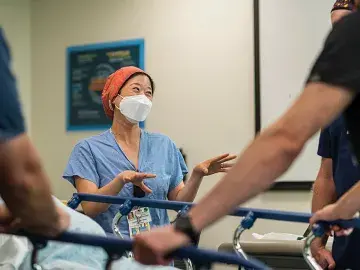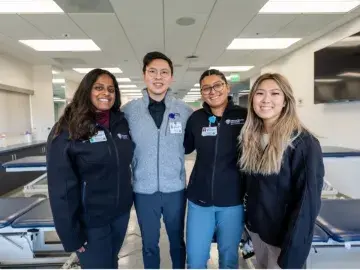Return on Investment Shines, as High-Paying Jobs Help Grads Repay Student Loans

Samuel Merritt University has one of the lowest student loan default rates in the country, according to recent data released by the U.S. Department of Education.
Fewer than 1 in 100 (0.9%) graduates defaulted on their student loans in 2017, the most recent year for which data is available, according to an analysis by financial education website LendEDU. That’s markedly lower than the state average of 6.4% and the national average of 9.7%. SMU’s low default rate places it in the top 5% of nearly 4,400 colleges and universities nationwide.
“We’re proud of SMU’s low student debt default rate,” says Fred Baldini, provost and vice president for academic affairs. “We think it speaks well of the education our students receive that prepares them to be leaders in their field with salaries that are appropriate for such highly trained professionals.”
The University’s low student loan default rate can be attributed to three primary factors, according to Tyler Pruett, director of financial aid. First, SMU students stay in school and graduate. Second, they land jobs soon after graduation. And third, they earn higher-level salaries as a result of their training.
Ahead of the competition
Nationally, students at greatest risk of default on student loans are those that borrow but don’t graduate, Pruett says. SMU’s three-year median graduation rate of 94% surpasses that of many other universities, and the University’s high student retention and graduation rates lead to fewer loan defaults.
SMU alumni are also in high demand. Within a year of graduating, 98% of SMU students find a job within their profession. Several of the University’s programs have an employment rate of 100% within a year of graduation.
Additionally, graduates tend to be employed in higher-paying jobs. Bachelor of Science in Nursing alumni, for example, earn a median income of $100,100 six years after graduation, according to Credible. The University’s top-10-earning healthcare profession programs include physician assistant, nurse practitioner, registered nurse, and physical therapist, according to U.S. News and World Report. Not surprisingly, students who obtain higher-paying jobs tend to repay their student loans and not default, Pruett says.
An estimated $1.67 trillion in student loan debt is owed nationally, making this a significant economic concern especially as the total amount owed continues to rise.
As students carefully weigh the cost of higher education, student loan default rates can be a useful tool in evaluating universities. SMU’s low default rate means that it provides an environment where the burden of student loan debt is dramatically less compared to most other colleges and universities in the country.


